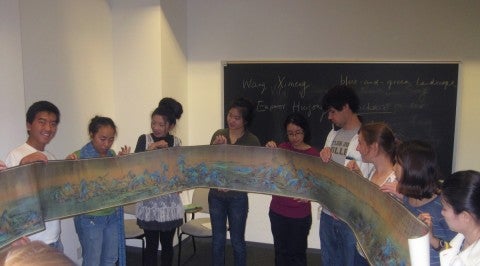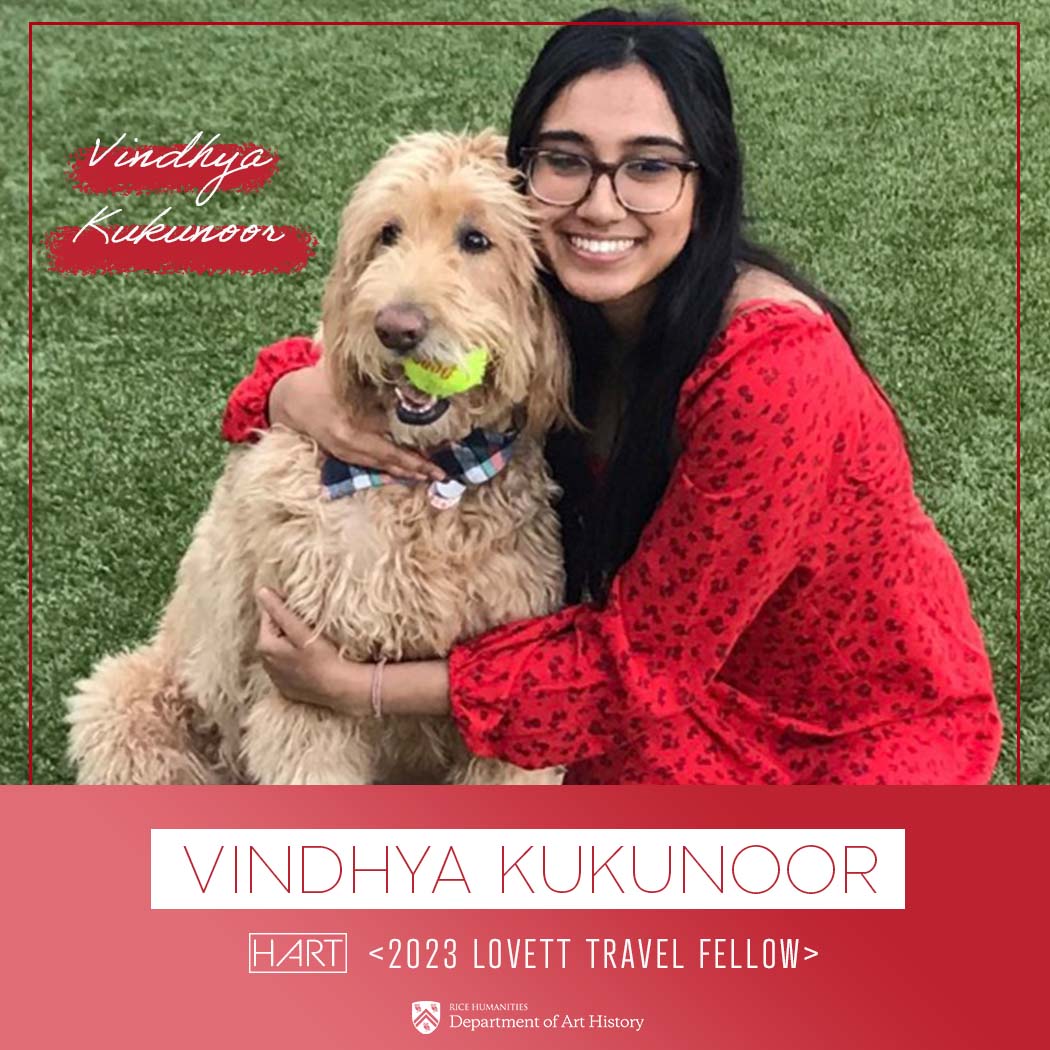Student Spotlight: Vindhya Kukunoor '24
2023 Mary Ellen Hale Lovett Travel Fellow
The Lovett Travel Fellowship, which provides students with the opportunity to enhance their educational experience at Rice by traveling to significant sites to conduct field research in art history and architectural history, was also presented to Vindhya Kukunoor, double majoring in Art History and Biosciences, who plans to venture to Spain at the beginning of summer to research on the intersection between sciences and art with a focus on the anatomical depictions of the female body in artworks:
“Underlying my passion for the arts and sciences is my identity as a woman, sparking my interest in depictions of the female body in art. However, as with most subjects in art, representations of women have evolved throughout time. As such, my research topic attempts to explore how artistic renditions of the female body parallel advancements in scientific knowledge from about 1500-1800. Thus, my project views art not only as a reflection of an artist’s genius, but also as a reflection of advancements in scientific intelligence. To explore my topic, I have selected 5 paintings currently displayed at the Museo del Prado in Madrid: “Eve” by Alrbrecht Dürer (1507), “Leda and Swan” by Georg Pencz (1529-1550), “Venus with an Organist and a Dog” by Titian (1550), “The Three Graces” by Peter Paul Rubens (1630-1635), and “The Naked Maja” by Francisco de Goya y Lucientes (1795-1800). All of these pieces include female subject(s) that are either fully or partially nude, allowing me to evaluate the anatomical accuracy of these depictions using our modern understanding of anatomy as a point of reference. I also plan to use medical records and documents from the time period the piece was made to assess the relative anatomical accuracy of the paintings in order to determine whether the depictions are congruent with available scientific knowledge at the time.”


